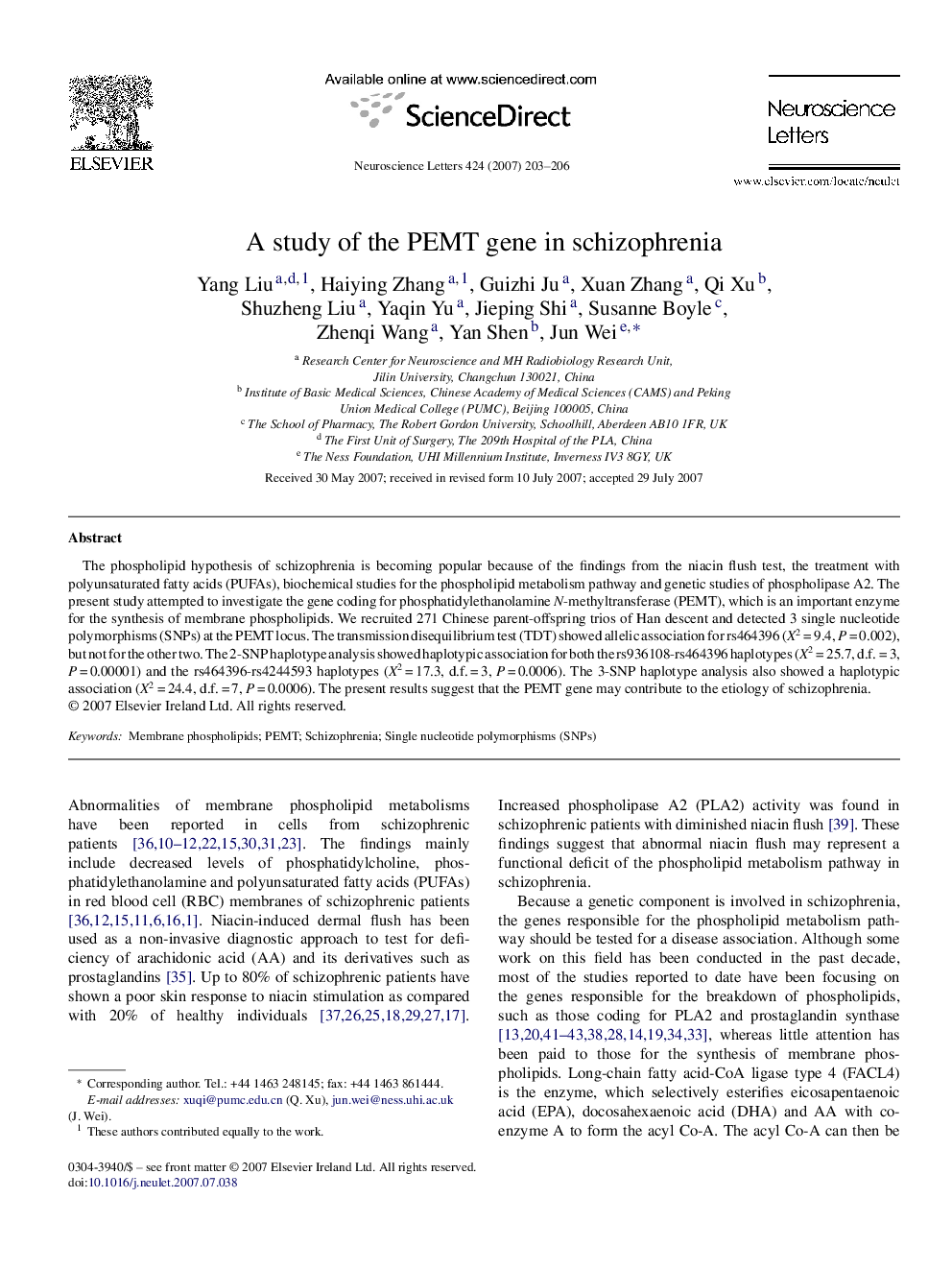| Article ID | Journal | Published Year | Pages | File Type |
|---|---|---|---|---|
| 4349097 | Neuroscience Letters | 2007 | 4 Pages |
The phospholipid hypothesis of schizophrenia is becoming popular because of the findings from the niacin flush test, the treatment with polyunsaturated fatty acids (PUFAs), biochemical studies for the phospholipid metabolism pathway and genetic studies of phospholipase A2. The present study attempted to investigate the gene coding for phosphatidylethanolamine N-methyltransferase (PEMT), which is an important enzyme for the synthesis of membrane phospholipids. We recruited 271 Chinese parent-offspring trios of Han descent and detected 3 single nucleotide polymorphisms (SNPs) at the PEMT locus. The transmission disequilibrium test (TDT) showed allelic association for rs464396 (X2 = 9.4, P = 0.002), but not for the other two. The 2-SNP haplotype analysis showed haplotypic association for both the rs936108-rs464396 haplotypes (X2 = 25.7, d.f. = 3, P = 0.00001) and the rs464396-rs4244593 haplotypes (X2 = 17.3, d.f. = 3, P = 0.0006). The 3-SNP haplotype analysis also showed a haplotypic association (X2 = 24.4, d.f. = 7, P = 0.0006). The present results suggest that the PEMT gene may contribute to the etiology of schizophrenia.
